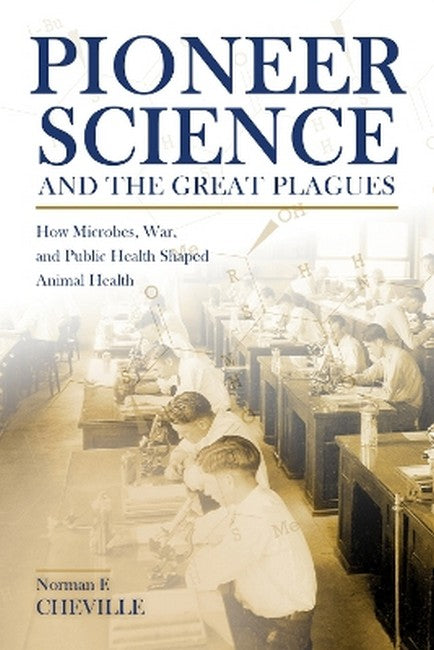Norman F. Cheville is distinguished professor and dean emeritus of the College of Veterinary Medicine at Iowa State University. Cheville began his work at the Army Biological Laboratory in Fort Detrick, Maryland, in the Veterinary Corps of the US Army from 1959 to 1961. After three years as research associate at the University of Wisconsin, he moved to the National Animal Disease Center as chief of Pathology from 1964 to 1989, and later as chief of the Brucellosis Research Unit, where he led the team that developed a new vaccine for bovine brucellosis. Working under Tony Allison at the National Institute for Medical Research in London in 1968, he investigated cellular immunity in poxvirus diseases. He was appointed chair of the Department of Veterinary Pathology at Iowa State University in 1995, and in 2000 was appointed dean of the College of Veterinary Medicine in 2000, from which he retired in 2004.
Request Academic Copy
Please copy the ISBN for submitting review copy form
Description
Preface Acknowledgments Part I. Prologue 1. The Veterinary Schools of Europe 2. Edward Jenner: Zoologist, Physician, Pioneer 3. William Dick: From Farrier to Veterinarian in Edinburgh 4. The Science Giants of 1860: Pasteur, Virchow, and Darwin 5. Robert Koch: Game Change Part II. Farrier to Veterinarian 6. Emigrants West: Ohio Country, Iowa Territory, and Tejas 7. The Canadian Midwest: Divergence of Lower and Upper Canada 8. Pioneers in the Midwest Frontier: Physicians in Veterinary Practice 9. New Plagues, Civil War, and the United States Department of Agriculture 10. Agriculture and Veterinary Science in the Midwest Part III. Pioneering Veterinary Education 11. Urban East Versus Rural West: Montreal and New York Diss Toronto and Iowa 12. The Pioneer State Colleges: Iowa, Ohio, Pennsylvania, and Cornell 13. Plagues and the Bureau of Animal Industry 14. Bacteriology in the Heartland 15. The 1890s: Horse Markets and Enrollments Drop Part iv. Livestock and Veterinarians Go West 16. Private Veterinary Schools: Chicago, Kansas City, and Indianapolis 17. Public Veterinary Schools: The Second-Generation Pioneers 18. The Bureau of Animal Industry and Hog Cholera 19. Veterinary Education, Charles Stange, and the Flexner Report 20. World War I: Biowarfare, Prejudice, and the U.S. ArmyVeterinary Corps Part v. Ascendance 21. Agricultural Depression Amidst a National Boom: The 1920s 22. 1929: Prelude to Bad Times 23. Public Health and Distrust of Government: The Tuberculin War 24. A Depression Paradox: Culture and Science 25. New Deal: Discoveries in Infectious Disease Part vi. Duty Required 26. War: The Home Front 27. Veterinary Corps and Bioterror 28. Postwar Investigations of Enemy Biological Warfare 29. Prelude to the Science Revolution 30. The Atomic Age Part vii. Transformation 31. New Programs, New Laboratories: Malaria, Polio, and New Viruses 32. Comparative Medicine: Models for Leukemia 33. Grassroots Mandates: The National Research Centers for Livestock Diseases 34. Old Plagues in the Wild: The National Wildlife Centers 35. New Plagues: Scrapie, Mad Cow Disease, and the Prion Part VIII. Epilogue 36. The Farm Crises of 1980-1995: Distrust of Science 37. The Gender Shift 38. Biopolitics 39. Bioterror, Anthrax, and the National Animal Health Networks 40. Anti-Science Scams and Keys to Progress Appendixes Notes Index

